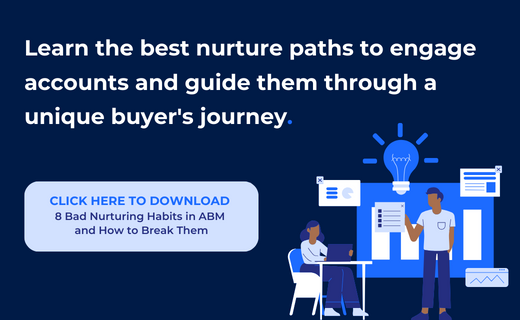
Using Digital Channels with Precision: The Do’s and Don’ts of Content Syndication

When used in a unified multi-channel account-based marketing (ABM) strategy, content syndication offers immense potential to amplify reach, strengthen brand visibility, and generate valuable leads. By republishing your original content, such as blog posts, articles, infographics, and videos, on third-party websites, content syndication enables you to extend your brand impact beyond your own channels. When executed correctly, the benefits of content syndication can be significant and rewarding to:
- Influence buyers to take action with the right content
- Capture more buyers by repurposing effective content across various channels
- Obtain valuable buyer information to better understand their needs by selecting the right program
Yet, despite its immense potential, content syndication also has some pitfalls that can hinder achieving positive results. In article two of our “Using Digital Channels with Precision” Blog Series, we review the most common do’s and don’ts of content syndication and provide some best practices you should follow to ensure you’re maximizing your efforts.
The Role of Content Syndication in a Multi-Channel ABM Strategy
In our first article, we discussed why multi-channel ABM helps you meet and influence buying committee members where they are with a persistent, cohesive, and personalized experience. A multi-channel campaign is considered to be more effective than a single channel due to proven customer reach, engagement, and conversions. By delivering the same messaging and value propositions across each channel, your content becomes a guide for buyers to make a well-informed decision.
Syndicating content is a great strategy to generate leads, and when used in a multi-channel, full-funnel ABM strategy, it helps you stay engaged with key decision-makers and build stronger long-term relationships with them. The real value lies in how precisely content syndication can deliver content to a targeted audience exactly when they need it in their buyer’s journey. This allows you to identify which buyers are consuming the content to indicate a high level of interest and prioritize engagement with that account.
To maintain consistency and personalize the experience, execute a unified content and strategy that includes content syndication across the other primary channels buying committee members visit the most: display advertising, social advertising (especially on LinkedIn), and emerging channels like Connected TV (CTV) advertising.
With 43% of buyers stating they need more information to justify software spend, the goal is to not just provide information but to deliver it in a persistent and customized manner that surrounds the buying committee with what they need. This approach builds brand credibility and promotes deeper engagement. Let’s look at some of the common content syndication do’s and don’ts that can hinder you from reaching this goal.
DO use multiple sources of data to identify target accounts
A substantial mistake we see with content syndication is targeting the wrong audience. This happens when you don’t leverage the right data to identify in-market accounts and the individuals on the buying committee researching and engaging with relevant content and messaging. As a result, your content gets lost in the noise or is unappealing and ignored by those who see it.
Data is a critical component of any multi-channel ABM strategy. As buying committees become larger and purchase decisions more complex, it’s important to consider the insights brought together by multiple data sources to uncover the accounts most likely to make a purchase and the right individuals to engage within the organization.
While first-party data like that found in your CRM and MAP provides key insights and characteristics of your target accounts, you also need access to historical performance, technographic, and intent data to create a clearer picture of the accounts demonstrating the highest propensity to purchase. Unify this data to identify your target accounts and create detailed buyer personas that encompass the specific pain points and needs to activate the right target account list for your content syndication strategy.
DON’T rely on one-size-fits-all messaging
In today’s hyper-competitive market, brands need to stand out among buyers with personalized experiences. In fact, research shows that 80% of consumers are more likely to make a purchase with brands that offer personalized experiences.
Designing personalized experiences that live up to buyer expectations requires messaging that addresses both their business and emotional needs. The right language, tone, and word choice can make or break your content syndication campaign. It’s critical to lean on data to understand your buyer’s pain points and concerns, and craft personalized messaging that builds trust and ensures your solution stays top-of-mind.
Holistically understanding buyer’s pain points and concerns involves a healthy combination of buyer intent data, historical engagement data, and recent content engagement data. For example, ML Insights data reveals that small and medium-sized businesses conducted more research into AI solutions over the past year. Intent topics like “predictive analytics” and “application migration” tells us that accounts want direction into utilizing AI in their business models, while previous engagement data from Security-based roles tells us that those monitoring business systems are most involved in buying conversations.
Using multiple sources of data amplifies your understanding of buyer’s pain points and concerns. It removes the guesswork around what buyers care about so you can focus on enhancing your multi-channel campaign with the content and messaging needed to drive them through their buying journey faster.
DO map content to the buyer’s mindset at each stage of the buying journey
As potential buyers progress through the buying cycle, they actively seek out different types of content to help them with their decision-making process. You must be aware of these content types and meet buyers based on where they’re at in their buyer’s journey. Aligning your content syndication programs with the expectations of these buyers drives more engagement.
For example, during the Awareness stage, capturing buyer interest is your objective. Content like blog articles, infographics, step-by-step guides, and webinars that introduce or reinforce your brand value help establish a trusting and knowledgeable relationship with them.
Now, compare that to the objective in the Evaluation stage. Here, you want to use content that reinforces your experience and reputation, shows your capabilities, and gives buyers an outlook into how your solution would work them. You can do this with customer stories demos, and an ROI calculator.
This is another area where historical data is key for choosing content and messaging that uniquely meets each member of the buying committee with the information they need. Based on the performance of a campaign with like-accounts, you can better predict what a persona or buying group needs in a similar state.
Matching content to the buyer’s mindset within their customer journey helps you balance the brand-building necessary for long-term revenue growth through a trusted relationship with the buying group.
DON’T forget to nurture accounts across the buying journey
Just because you have more people reading your content doesn’t mean they’re all going to be ready to buy from you. In fact, chances are most of them will still be in the early stages of the buyer’s journey and just getting familiar with your brand and the solution you offer. Others might be aware of your brand but are not ready to purchase.
According to LinkedIn, at any given time only 5% of your buyers are in-market for your solution; the other 95% are not yet ready to buy, so nurturing helps create demand for your solution and keeps your brand top-of-mind for when they eventually start their buying journey. That’s why it’s important to nurture accounts with a personalized experience to educate and drive behavior change across the entire buying committee so that when they are ready to buy, they’re more likely to buy from you.
Craft diverse nurturing paths that address audience needs and guide them through a personalized journey. Supplement with additional channels like Display and LinkedIn Ads to boost engagement. Different nurture programs can target different segments of your audience based on their specific needs, interests, behavior, or address the problem associated with the buying journey stage. You tailor messaging and content to better engage each segment and guide them through a unique journey by creating multiple programs, not just relying on a one-size-fits-all path.
DO leverage real-time data to continuously optimize your campaigns (not just at the end)
Since ABM is viewed as more of a marathon than a sprint, the focus needs to be on real-time measurement of how the account progresses through the buyer’s journey and the identification of optimization opportunities throughout.
Use the right metrics to measure success and accurately gauge how your multi-channel efforts are paying off with more engaged and qualified accounts for your pipeline. While metrics like impressions, open rates, site visits, and downloads are good indicators of whether your content is engaging and effective, focus also on deeper data points related to the pipeline to drive improvements to your campaigns over time. This could be changes in pipeline volume and velocity, or the measurable value an account provides. Understanding the impact of your strategy on the health of your pipeline gives you more insight into what is and what’s not working with your content strategy.
These insights allow you to take a data-driven approach to campaign optimization that generates more revenue from target accounts, improves the ROI of your marketing efforts, and increases win rates through more relevant and personalized marketing content for your target accounts.
Content Syndication: A Powerful Lead Generation Tool
When used as part of an always-on, multi-channel ABM strategy, content syndication is a powerful tool to generate leads, increase brand awareness, and drive accounts into your sales pipeline faster. By repurposing and distributing your valuable content on third-party platforms, you can reach a larger audience, establish credibility, and attract prospects who are actively seeking information about your solution. Just remember, the most successful content syndication campaigns rely on data-driven insights to determine the right audience to reach and the content to use to engage them. By following our do’s and don’ts for more successful content syndication campaigns, you’ll expand your reach, attract qualified leads, and maximize conversion opportunities.
Looking for more guidance on crafting successful multi-channel ABM strategies? Check out the links below:
- The 2023 Full-Funnel ABM Playbook
- Storytelling for the Sale: Developing a Better Content Strategy Across the Buying Journey
- Why Quality Data is the Key Ingredient for Creating More Successful ABM Campaigns


